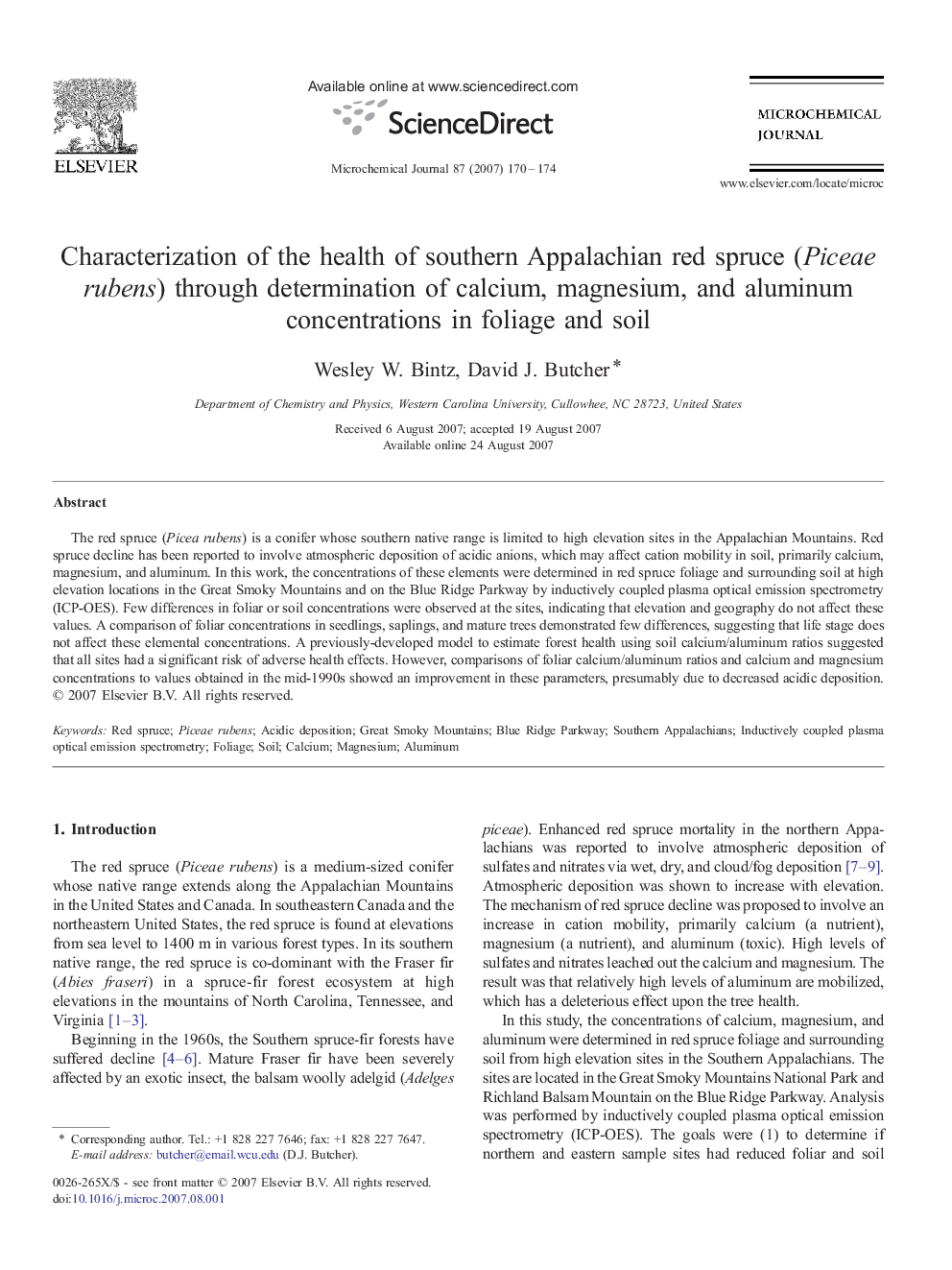| Article ID | Journal | Published Year | Pages | File Type |
|---|---|---|---|---|
| 1228233 | Microchemical Journal | 2007 | 5 Pages |
Abstract
The red spruce (Picea rubens) is a conifer whose southern native range is limited to high elevation sites in the Appalachian Mountains. Red spruce decline has been reported to involve atmospheric deposition of acidic anions, which may affect cation mobility in soil, primarily calcium, magnesium, and aluminum. In this work, the concentrations of these elements were determined in red spruce foliage and surrounding soil at high elevation locations in the Great Smoky Mountains and on the Blue Ridge Parkway by inductively coupled plasma optical emission spectrometry (ICP-OES). Few differences in foliar or soil concentrations were observed at the sites, indicating that elevation and geography do not affect these values. A comparison of foliar concentrations in seedlings, saplings, and mature trees demonstrated few differences, suggesting that life stage does not affect these elemental concentrations. A previously-developed model to estimate forest health using soil calcium/aluminum ratios suggested that all sites had a significant risk of adverse health effects. However, comparisons of foliar calcium/aluminum ratios and calcium and magnesium concentrations to values obtained in the mid-1990s showed an improvement in these parameters, presumably due to decreased acidic deposition.
Keywords
Related Topics
Physical Sciences and Engineering
Chemistry
Analytical Chemistry
Authors
Wesley W. Bintz, David J. Butcher,
